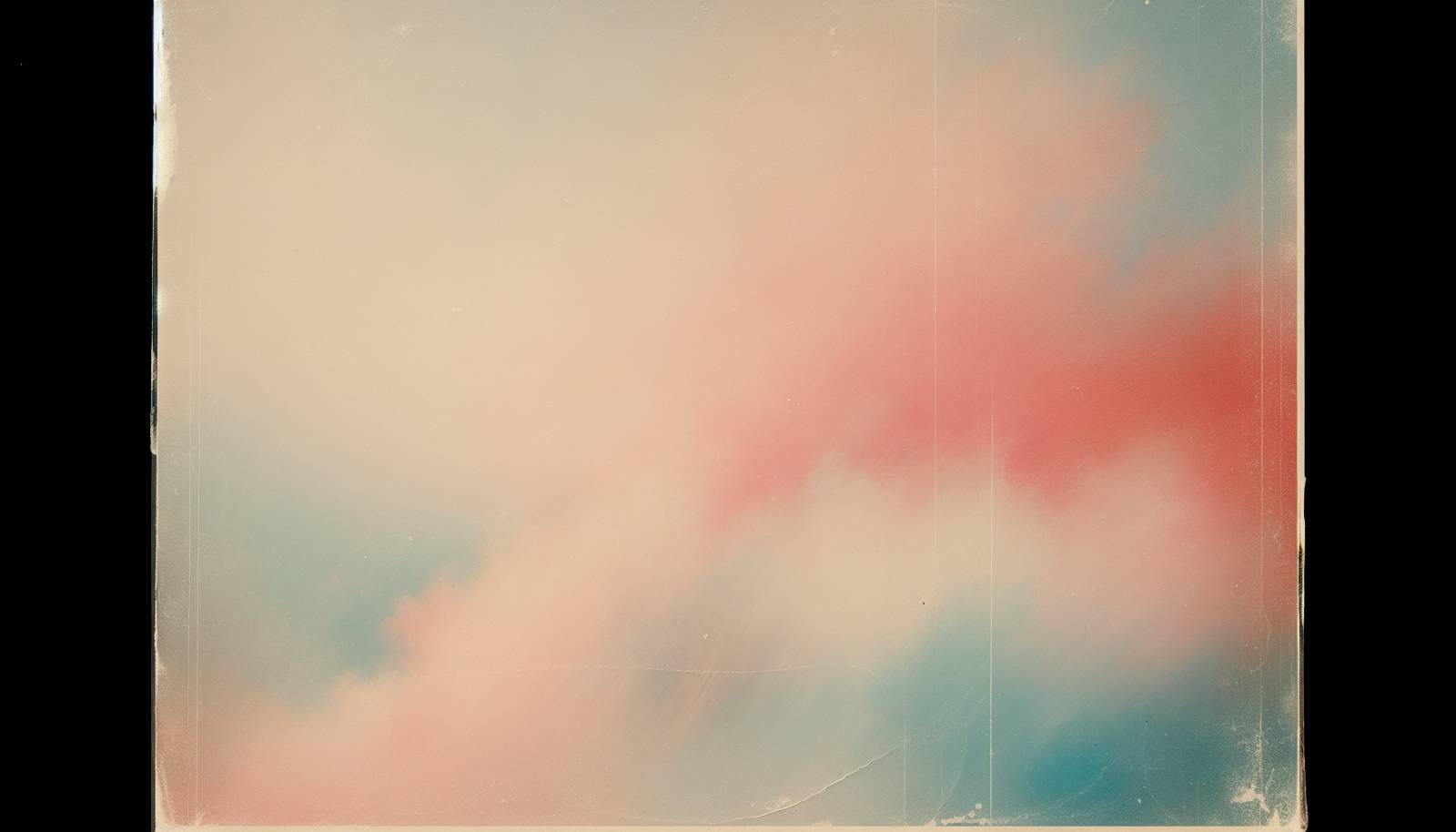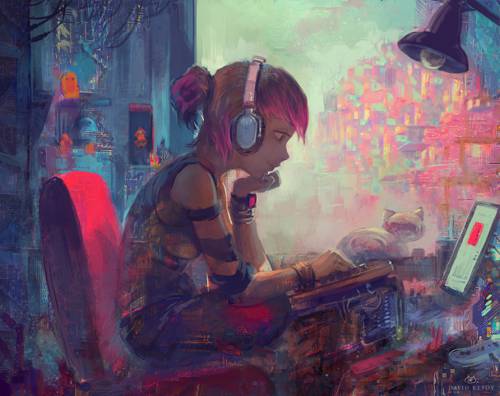
FAQ About The Evolution of Lofi Aesthetic in Visual Arts

What is the meaning of 'lofi aesthetic' in visual arts?
The term 'lofi aesthetic' in visual arts refers to a style characterized by simplicity, imperfection, and nostalgia. It often includes elements such as grainy textures, muted color palettes, and retro-inspired designs that evoke a handmade or vintage feel. This aesthetic celebrates the beauty in imperfection and contrasts sharply with high-definition, polished visuals.

How did the lofi aesthetic originate?
The lofi aesthetic originated in the music world during the 1990s and gained significant popularity in the 2000s with the rise of lofi hip-hop music. In visual arts, it draws inspiration from this music genre, as well as from retro design elements from the 1970s and 1980s. This aesthetic embraces a sense of nostalgia, drawing from older technologies such as analog tapes and early digital graphics.

Why has lofi aesthetic become popular in modern digital design?
Lofi aesthetic has become popular in modern digital design due to its ability to convey warmth and authenticity. As users grow weary of overly slick and corporate designs, lofi offers a more approachable and human touch. It taps into nostalgia, countering the fast-paced, high-tech culture with a preference for more organic and relaxed styles.

What are common elements found in lofi visual designs?
Lofi visual designs often include elements such as pastel colors, retro fonts, hand-drawn illustrations, and distressed textures. These designs frequently imitate old media formats like VHS or early computer screens, using imperfections like visual noise or pixelation to create a vintage or 'dated' effect.

How does lofi aesthetic impact print media today?
In print media, lofi aesthetics are used to create nostalgic and artisanal qualities. It appears in areas like book covers, posters, and album artwork, where the tactile, unfinished, or retro look can enhance the storytelling by evoking a sense of history and craftsmanship.

Can you give examples of lofi aesthetics in popular culture?
Examples of lofi aesthetics in popular culture include the use of VHS-style filters on social media, TV show intros with retro design themes, and the widespread popularity of lofi music channels on YouTube that feature animated graphics with a nostalgic feel. These elements are designed to evoke a sense of calm and familiarity in viewers and listeners.

How does lofi aesthetic tie into the trend of minimalism?
Both lofi aesthetics and minimalism share a focus on simplicity and the reduction of excess. Lofi achieves this by stripping away glossy finishes and embracing imperfections, while minimalism often involves clean lines and absence of clutter. Both aesthetics aim to create a calming, focused environment that resonates with viewers seeking relief from sensory overload.

Are there specific technologies or techniques associated with creating lofi visuals?
Creating lofi visuals often involves techniques such as scanning hand-drawn sketches, using retro software filters, applying noise effects, or simulating the look of older media. Tools like Photoshop or specialized apps can mimic the low fidelity of older cameras and video equipment, while artists might incorporate analog techniques directly into their work.

What role does nostalgia play in the lofi aesthetic?
Nostalgia is central to the lofi aesthetic as it connects people to past eras characterized by simpler technology and a slower pace of life. By evoking memories of the past, whether through retro designs or vintage visual motifs, lofi aesthetics satisfy a cultural longing for an era perceived as more authentic and less digital.

How has the internet influenced the spread of the lofi aesthetic?
The internet has played a crucial role in the spread of lofi aesthetic, largely due to platforms like YouTube and Instagram where visual styles can quickly gain traction. Online forums and communities dedicated to retro culture or indie creations further promote and evolve this style, making it accessible to a global audience.

Is the lofi aesthetic used in branding or marketing?
Yes, the lofi aesthetic is increasingly used in branding and marketing to create an approachable and relatable image. Brands may use lofi elements in their logos, advertisements, or product packaging to appeal to consumers looking for authenticity and a sense of nostalgia, thereby differentiating themselves from more traditional, polished competitors.

How do artists incorporate lofi elements into their work?
Artists often incorporate lofi elements by embracing imperfections and using materials or techniques that aren't overly refined. This could include handmade typography, muted color schemes, and distressed textures. Artists might also draw inspiration from retro devices or cultural elements, imbuing their work with a distinctively nostalgic feel.

What is the connection between lofi music and lofi visuals?
Lofi music and visuals share a common aesthetic goal: creating a relaxed, nostalgic environment. The visuals often accompany lofi music to enhance the listening experience, typically featuring animated scenes or soothing environments that reflect the music's subdued and reflective nature. Both elements work together to evoke a sense of calm and reminiscence.

Are there criticisms of the lofi aesthetic trend?
Critics of the lofi aesthetic trend argue that it can romanticize the past excessively, sometimes overlooking the technological advances of today. Others believe it may become overused, leading to a sense of uniformity or cliché. However, proponents see it as a valuable artistic expression that challenges modern visual conventions.

What are some modern design projects inspired by lofi aesthetics?
Several modern design projects have taken inspiration from lofi aesthetics, such as video game titles featuring pixel art or promotional materials for indie films and bands that use retro design themes. Additionally, website designs might incorporate lofi elements to create user interfaces that feel approachable and distinct from mainstream, highly polished designs.

Does lofi aesthetic have cultural origins or inspirations?
Lofi aesthetic has cultural origins primarily in the U.S. and Japan, drawing from Western retro styles and Japanese 'wabi-sabi,' which finds beauty in imperfection. These cultural influences contribute to its global appeal, resonating with audiences that appreciate a convergence of nostalgia and simplicity.

How do graphic designers apply lofi aesthetics in digital interfaces?
Graphic designers apply lofi aesthetics in digital interfaces by incorporating visual elements like pixelation, retro fonts, and muted colors. They might create user experiences that evoke vintage video game menus or early internet graphics, aiming for a design that feels deliberately imperfect yet engaging and intuitive.

What differentiates lofi aesthetic from similar styles like retro or vintage?
While lofi, retro, and vintage aesthetics are related, they emphasize different aspects of nostalgia. Lofi focuses on deliberate imperfection and simplicity, often as a counter-culture to digital precision, whereas retro refers to styles from past decades, and vintage relates to the authentic use of old objects or fashion. Lofi uniquely combines elements of both, emphasizing an unpolished look.

What is the impact of lofi aesthetic on youth culture?
Lofi aesthetic deeply influences youth culture by offering an alternative to the polished, fast-paced images often found in mainstream media. It resonates with younger audiences seeking authenticity and a break from digital perfection, contributing to trends in fashion, music, and art that value a 'less is more' philosophy.

How can someone start incorporating lofi aesthetics into their art or design projects?
To incorporate lofi aesthetics, artists and designers can start by experimenting with retro styles, embracing imperfections, and exploring nostalgic themes. Using tools like vintage filters in graphic design software or mixing traditional media with digital tools can help achieve the desired lofi look while maintaining a sense of personal authenticity.
